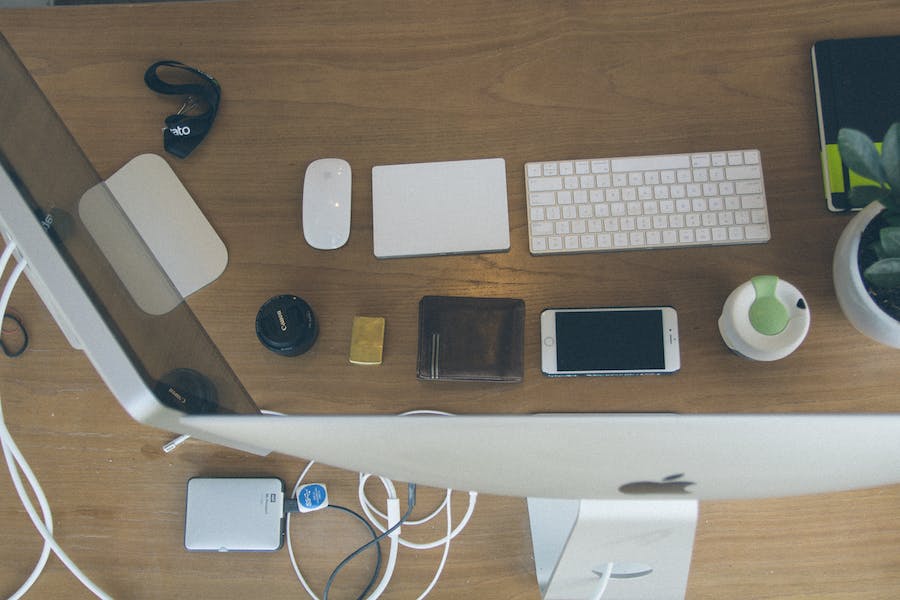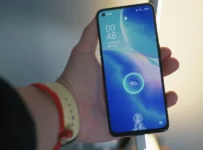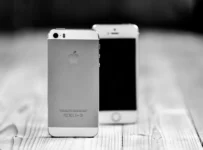
The ubiquity of Bluetooth technology in our daily lives, from wireless headphones and speakers to smartphones and laptops, has made it an indispensable communication tool. However, not all Bluetooth connections are created equal, and the version of Bluetooth your devices use can significantly impact their performance and compatibility. In this comprehensive guide, we delve into the world of Bluetooth versions, their evolution, and the importance of knowing which one your devices support. Whether you’re troubleshooting connectivity issues, planning an upgrade, or simply curious about your technology, understanding your Bluetooth version is crucial. This article will equip you with the knowledge to identify and make the most of your Bluetooth capabilities.
What Bluetooth Version Do I Have?
To determine your Bluetooth version, check your device’s specifications in its settings menu or consult the user manual. On smartphones and tablets, navigate to the Bluetooth section in the settings, while on computers, you can usually find this information in the device manager or system settings. For headphones and other accessories, consult the manufacturer’s documentation or website. Online tools and apps can also help identify your Bluetooth version in some cases.
Understanding Bluetooth Versions
Bluetooth, a wireless communication technology, has evolved over the years through various versions, each bringing improvements and new features. In this section, we will explore the key characteristics of Bluetooth versions 1.x through 5.x.
1. Bluetooth 1. x:
Bluetooth 1.x introduced wireless connectivity in the early 2000s. It had a limited data transfer rate of 1 Mbps and a short range of around 30 feet (10 meters). While revolutionary at the time, it was relatively slow for modern data-intensive applications.
2. Bluetooth 2.x:
Bluetooth 2.x brought Enhanced Data Rate (EDR), doubling the data transfer rate to 2 Mbps. This version also introduced more robust security measures, making it more resistant to eavesdropping and interference.
3. Bluetooth 3.x:
Bluetooth 3.x introduced High-Speed (HS) Bluetooth, capable of reaching data rates of up to 24 Mbps. It also featured Enhanced Power Control, improving power efficiency. However, Bluetooth 3.x faced challenges with backward compatibility and was not widely adopted.
4. Bluetooth 4.x:
Bluetooth 4.x includes several subversions (4.0, 4.1, and 4.2), each with incremental improvements. Low Energy (LE) Bluetooth was introduced, which significantly reduced power consumption, making it ideal for IoT devices. Bluetooth 4.x also improved data transfer speeds and added enhanced security features.
5. Bluetooth 5.x:
Bluetooth 5.x is the latest major version as of my last knowledge update in January 2022. It introduced even higher data transfer speeds, reaching up to 2 Mbps, and extended the range to approximately 800 feet (240 meters) in optimal conditions. Bluetooth 5.x also enhanced support for IoT devices, offering better performance and a wider range of applications.
How To Check Bluetooth Version On Common Devices?
To check the Bluetooth version on common devices like smartphones, tablets, computers, headphones, and more, follow these steps:
- Smartphones And Tablets (Android/iOS): Android: Go to “Settings” > “About Phone” or “About Device” > “Specifications” or “Bluetooth.”
- iOS: Navigate to “Settings” > “General” > “About” > “Bluetooth.”
- Windows PC: Right-click on the “Start” button and select “Device Manager.” Expand the “Bluetooth” category, and right-click on your Bluetooth adapter. Select “Properties” and go to the “Advanced” tab, where you’ll find the Bluetooth version.
- macOS: Click the Apple menu, go to “About This Mac” > “System Report” > “Bluetooth.” Look for “LMP Version” (Link Manager Protocol) for your Bluetooth version.
- Bluetooth Headphones/Speakers: Check the product manual or visit the manufacturer’s website for specifications. Some headphones announce the Bluetooth version when powered on.
- Smartwatches And Wearables: Go to the device’s settings or About section (varies by brand and model) to find Bluetooth version details.
- Online Tools And Apps (For Some Devices): Search for Bluetooth version checker apps in your device’s app store, but note that these may not work for all devices.
Why Identifying Your Bluetooth Version Matters?
- Compatibility With Devices: Different Bluetooth versions may have varying levels of compatibility with other devices. Knowing your Bluetooth version helps ensure that your devices can communicate seamlessly with each other. For example, a Bluetooth 5.0 device might not work optimally with a Bluetooth 4.0 accessory.
- Performance And Speed: Bluetooth versions often come with improvements in data transfer speeds. Knowing your Bluetooth version can help you assess the speed at which your devices can exchange data. This is particularly important for applications like streaming high-quality audio or transferring large files.
- Energy Efficiency: Newer Bluetooth versions, such as Bluetooth Low Energy (LE) in Bluetooth 4.0 and later, are designed for improved energy efficiency. Understanding your Bluetooth version can help you gauge the impact on your device’s battery life, which is crucial for mobile devices and wearables.
- Feature Support: Bluetooth versions introduce new features and capabilities. For instance, features like improved audio quality (e.g., aptX support) and enhanced security protocols are often associated with specific Bluetooth versions. Identifying your Bluetooth version ensures you can leverage these features if your device supports them.
- Security Considerations: Bluetooth vulnerabilities and security measures can vary between versions. Staying informed about your Bluetooth version helps you understand potential security risks and the need for updates or patches to mitigate vulnerabilities.
- Upgrading Considerations: If you’re looking to upgrade your devices, knowing your current Bluetooth version can guide your decision. Upgrading to a device with a newer Bluetooth version may offer significant benefits in terms of performance, compatibility, and future-proofing.
Troubleshooting And Tips
Bluetooth connectivity issues and questions about Bluetooth versions are common. Here are some troubleshooting tips and advice to help you address common Bluetooth-related problems and make the most of your Bluetooth technology:
- Update Firmware And Drivers: Ensure that your device’s firmware and drivers are up to date. Manufacturers often release updates to improve Bluetooth performance and address compatibility issues.
- Check Bluetooth Settings: Verify that Bluetooth is turned on and in discoverable mode on both devices if you’re attempting to pair them.
- Reboot Devices: Sometimes, a simple reboot of your smartphone, tablet, or computer can resolve Bluetooth connectivity problems.
- Remove Paired Devices: If you’re having trouble connecting a new device, consider removing or “forgetting” previously paired devices from your Bluetooth settings, as these may be causing conflicts.
- Range And Interference: Bluetooth has a limited range (typically around 30 feet or 10 meters). Ensure that the devices you’re trying to connect are within this range and that there are no significant obstacles or interference sources (e.g., other electronic devices, walls) in between.
- Battery Levels: Low battery levels can affect Bluetooth performance. Ensure that both devices have sufficient battery power for a stable connection.
- Check Bluetooth Version: As discussed earlier, identify the Bluetooth version of your devices to ensure compatibility. If you’re experiencing issues, it might be due to differences in Bluetooth versions.
- Forget And Re-Pair: If a connection is unstable or not working as expected, try “forgetting” the Bluetooth pairing on both devices and then re-pair them from scratch.
- Interference From Other Devices: Other nearby Bluetooth devices or wireless networks can interfere with your Bluetooth connection. Try disconnecting or turning off unnecessary Bluetooth devices or Wi-Fi networks.
- Update Operating Systems: Ensure that your devices’ operating systems are updated to the latest versions, as these updates often include bug fixes and improvements related to Bluetooth functionality.
- Use Manufacturer Apps: Some manufacturers offer dedicated apps for their Bluetooth devices that can provide additional troubleshooting and customization options. Check if such apps are available for your devices.
- Seek Manufacturer Support: If you’ve exhausted troubleshooting options and still face issues, contact the manufacturer’s customer support for guidance or possible warranty assistance.
Final Word
In our increasingly wireless world, understanding your Bluetooth version is pivotal. It ensures seamless compatibility, optimal performance, and efficient use of your devices. Whether you’re pairing your smartphone with headphones, connecting your laptop to peripherals, or considering an upgrade, knowing your Bluetooth version empowers you to make informed choices. With these insights and troubleshooting tips, you’re well-equipped to navigate the dynamic realm of Bluetooth technology, enhancing your wireless connectivity experience for a more enjoyable and productive digital life. Stay connected and stay informed!
FAQ’s
What Is Bluetooth Technology?
Bluetooth is a wireless communication technology that enables devices to exchange data and connect wirelessly over short distances.
How Can I Check My Device’s Bluetooth Version?
You can check your device’s Bluetooth version in its settings, user manual, or with online tools and apps. Visit the manufacturer’s website for specific guidance.
Why Is My Bluetooth Connection Unstable?
Unstable Bluetooth connections can result from interference, low battery levels, outdated firmware, or incompatible devices. Troubleshoot by checking these factors.
Can I Upgrade My Device’s Bluetooth Version?
Generally, you cannot upgrade the Bluetooth version of a device through software updates. You’d need to purchase a new device with the desired Bluetooth version.
What’s The Range Of Bluetooth Technology?
Bluetooth typically has a range of around 30 feet (10 meters). However, Bluetooth 5.x offers an extended range of up to 800 feet (240 meters) under ideal conditions.


